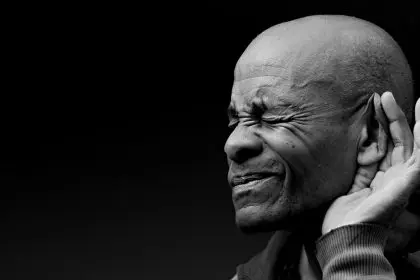Double vision, also known as diplopia, can be frightening and disorienting. It occurs when the brain fails to merge the visual information from both eyes into a single, clear image. While double vision can have various causes, it’s a common symptom experienced by stroke survivors.
This article explores why strokes can cause double vision, the different types of double vision that may occur, and the treatment options available for regaining normal vision.
Understanding Stroke and Its Impact on Vision
A stroke happens when blood flow to a part of the brain is interrupted. This can be caused by a blockage (ischemic stroke) or a bleed (hemorrhagic stroke). When brain cells are deprived of oxygen and nutrients due to the lack of blood flow, they become damaged or die.
The brain controls many bodily functions, including vision. Different areas of the brain are responsible for processing visual information from the eyes. A stroke affecting these areas can disrupt the communication between the brain and the eyes, leading to various vision problems, including double vision.
Why Does a Stroke Cause Double Vision?
There are two main reasons why a stroke can cause double vision:
-
Damage to the Cranial Nerves: Cranial nerves carry signals between the brain and various parts of the body, including the muscles that control eye movement. A stroke can damage these nerves, affecting their eye movement coordination. When your eyes are misaligned, they send separate images to the brain, resulting in double vision.
-
Disruption of Visual Processing Areas: The brain has specific areas responsible for interpreting the visual information from the eyes. A stroke affecting these areas can disrupt the brain’s ability to merge the two images into one, leading to double vision.
The type and severity of double vision will depend on the specific location and extent of the stroke damage.
Types of Double Vision After Stroke
Two main types of double vision can occur after a stroke:
-
Monocular Diplopia: This double vision persists even when you cover one eye. It’s less common and typically indicates an issue within the eye itself, such as a detached retina or a cataract.
-
Binocular Diplopia: This is the more common type of double vision after a stroke. It disappears when you cover one eye and is caused by problems with eye alignment due to nerve damage or visual processing issues. Binocular diplopia can further be categorized as:
- Horizontal Diplopia: Seeing double images, one above the other. This often indicates damage to the nerves that control side-to-side eye movements.
- Vertical Diplopia: Seeing double images, one next to the other. This suggests damage to the nerves responsible for up-and-down eye movements.
- Oblique Diplopia: Seeing double images diagonally. This can be caused by damage to multiple nerves or visual processing areas.
Symptoms of Double Vision After Stroke
In addition to seeing double images, other symptoms that may accompany double vision after a stroke include:
- Eye pain
- Eye fatigue
- Difficulty focusing on objects
- Crossed eyes (strabismus)
- Headache
- Dizziness
If you experience any of these symptoms after a stroke, seeking immediate medical attention is crucial. Early diagnosis and treatment can improve your chances of regaining normal vision.
Treatment Options for Double Vision After Stroke
The treatment for double vision after a stroke depends on the severity of the condition and the underlying cause. Here are some common treatment approaches:
-
Eye Patch: In some cases, wearing an eye patch over the weaker eye can help the brain favor the stronger eye and suppress the double image.
-
Prism Glasses: Special glasses with prisms can help bend light rays entering the eye, realigning the double images.
-
Eye Muscle Exercises: Specific eye exercises can help strengthen the eye muscles and improve their coordination, potentially reducing double vision.
-
Botox Injections: Injections of botulinum toxin (Botox) can temporarily paralyze certain eye muscles, forcing the stronger eye to take over and reducing double vision.
-
Surgery: In rare cases, surgery may be necessary to correct misaligned eye muscles.
The Road to Recovery
Recovery from double vision after a stroke can vary depending on the individual and the severity of the stroke. In some cases, double vision may resolve on its own within weeks or months as the brain heals. However, some individuals may require ongoing therapy or treatment to manage their double vision.
Living with Double Vision
While double vision can be a frustrating and disorienting experience, there are ways to manage it and improve your quality of life. Here are some tips:
- Maintain good lighting: Having adequate lighting can help reduce eye strain and improve visual clarity.
- Reduce screen time: Limit your screen time on computers, phones, and tablets, as prolonged screen use can worsen eye fatigue and double vision.
- Practice good posture: Maintaining good posture ensures proper alignment of your head and neck, which can indirectly benefit eye alignment.
- Manage stress: Chronic stress can exacerbate various health conditions, including vision problems. Techniques like meditation, deep breathing, or yoga can help manage stress and potentially improve double vision symptoms.
- Regular Eye Exams: Scheduling regular eye exams with your ophthalmologist is crucial after a stroke. They can monitor your vision health, assess your progress, and adjust your treatment plan as needed.
- Support Groups: Connecting with support groups for stroke survivors can provide valuable resources, information, and emotional support as you navigate your recovery journey
Conclusion
Double vision after a stroke can be a challenging complication. However, it’s important to remember that you’re not alone. Seeking prompt medical attention, following your doctor’s treatment plan, and adopting healthy lifestyle habits can significantly improve your chances of regaining normal vision and overall well-being. With dedication and support, you can manage double vision and live a fulfilling life.
This story was created using AI technology.














